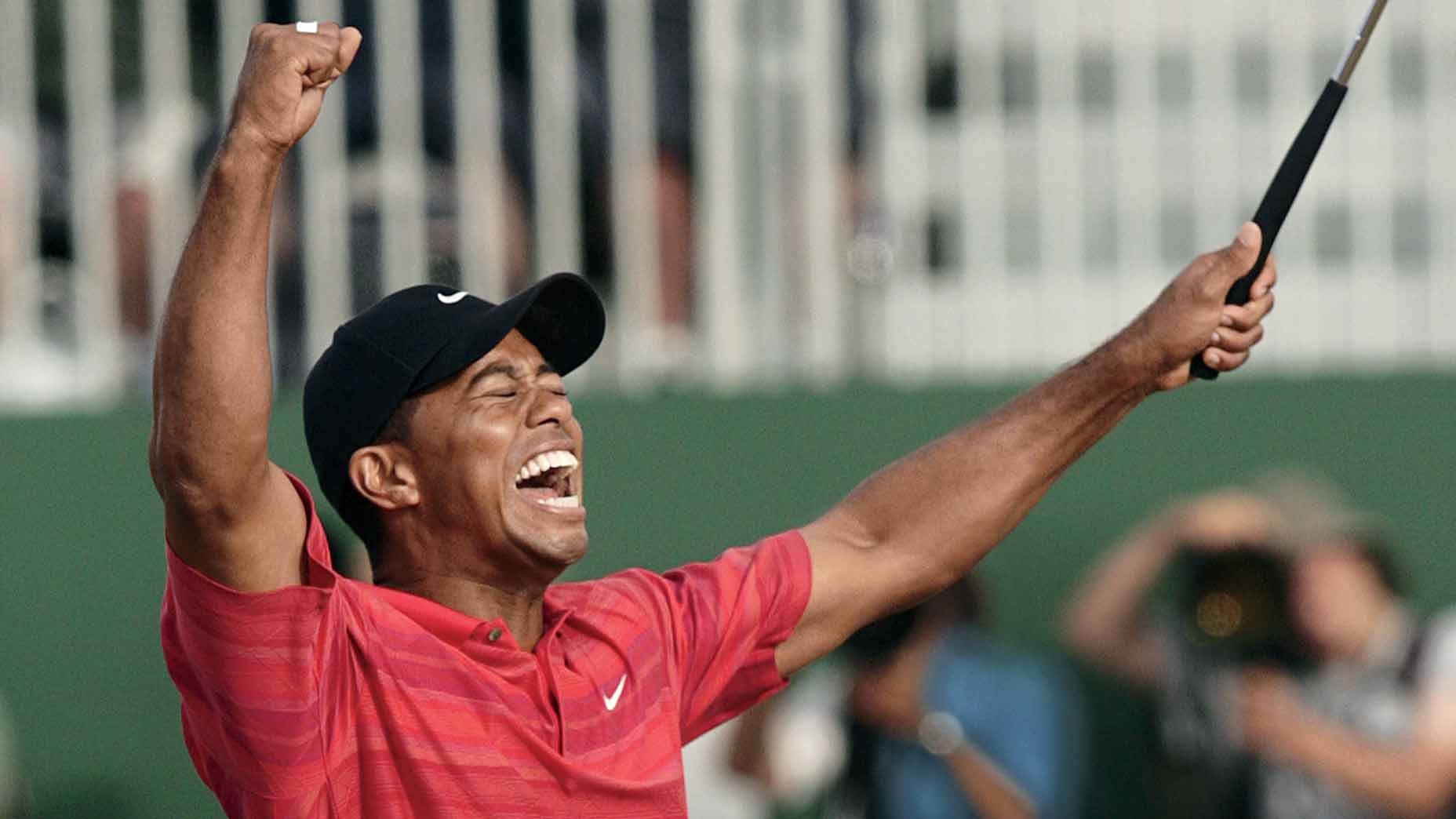The pre-transformation era Bryson DeChambeau won three times in five events between the 2018 Northern Trust and the 2019 Shriners.
Not. Too. Shabby.
But how does this five-event stretch rank against others during the modern era (from 1983 on, the year that the PGA Tour began collecting reliable data)?
In measuring performance across decades, money earned clearly doesn’t work: Purse sizes have increased dramatically over the years and prize money doesn’t necessarily reflect the importance of winning majors. Simply counting wins leads to unreliable tallies, too, because it inherently lends equal weight for second place and missing the cut. FedEx Cup points didn’t exist prior to 2007, so chuck that metric. To do this right, I had to create a new points system. For majors, I awarded 100 points for a victory, 60 for a second-place showing and so on. I scaled down the points for non-major events, according to the strength of field. In the end, this point system closely mimics that used for the Official World Golf Ranking and FedEx Cup. The difference? Mine allows us to look back all the way to 1983.
Let’s get to it. No golfer had a hotter stretch in the 1980s than Curtis Strange, who won three times in five events, culminating with his 1988 U.S. Open victory at The Country Club in Brookline, Mass. Strange collected 217 points during this streak. The next best runs of the decade belong to Seve Ballesteros (209 points in ’83, with two wins and four top 10s), Larry Nelson (197 points in ’87 with two wins and five top 10s) and Tom Kite (191 points in ’89 with two wins and four top 10s).
Since 2010, Rory McIlroy is the runaway leader in my hot-streak ranking. He had the two most torrid stretches. One started with the Open Championship in 2014, the beginning of a five-tournament run in which he collected 278 points (three wins and four top 10s). McIlroy’s other scorching five-event stretch started with the WGC-Bridgestone in 2012 and led to 256 points with three wins and four top 10s. Other 2010 standouts include Jason Day (245 points starting in 2015, three wins and four top 10s), Jordan Spieth (232 points in 2015, two wins and five top 10s) and Tiger Woods (225 points in 2013, three wins and four top 10s).
Along with a decade-to-decade breakdown, I also created an overall leaderboard from 1983 (below), allowing players to appear more than once, but only with non-overlapping five-event stretches. On this leaderboard, one name rises far above the rest: Tiger Woods.
In 2006, Woods won five consecutive events, starting at the Open Championship and ending at the Deutsche Bank Championship. You can’t beat that. But Woods also occupies the second spot, thanks to a sizzling 2001 stretch that saw him earn 322 points, with four wins and a T3 between the Bay Hill Invitational and the Memorial. And the third, fourth and fifth places on the list? You guessed it. Woods owns those, too (in 2000, 2007 and 2008). No one has ever doubted Tiger’s greatness, but this data-driven overview adds yet another dimension to his dominance. In addition to holding the top-five spots, Woods appears eight times in the top 10, and 11 times in the top 25.
And Bryson’s 2018–19 stretch? It ranks 37th, with 190 points. Not bad for someone who has played only 104 events.
